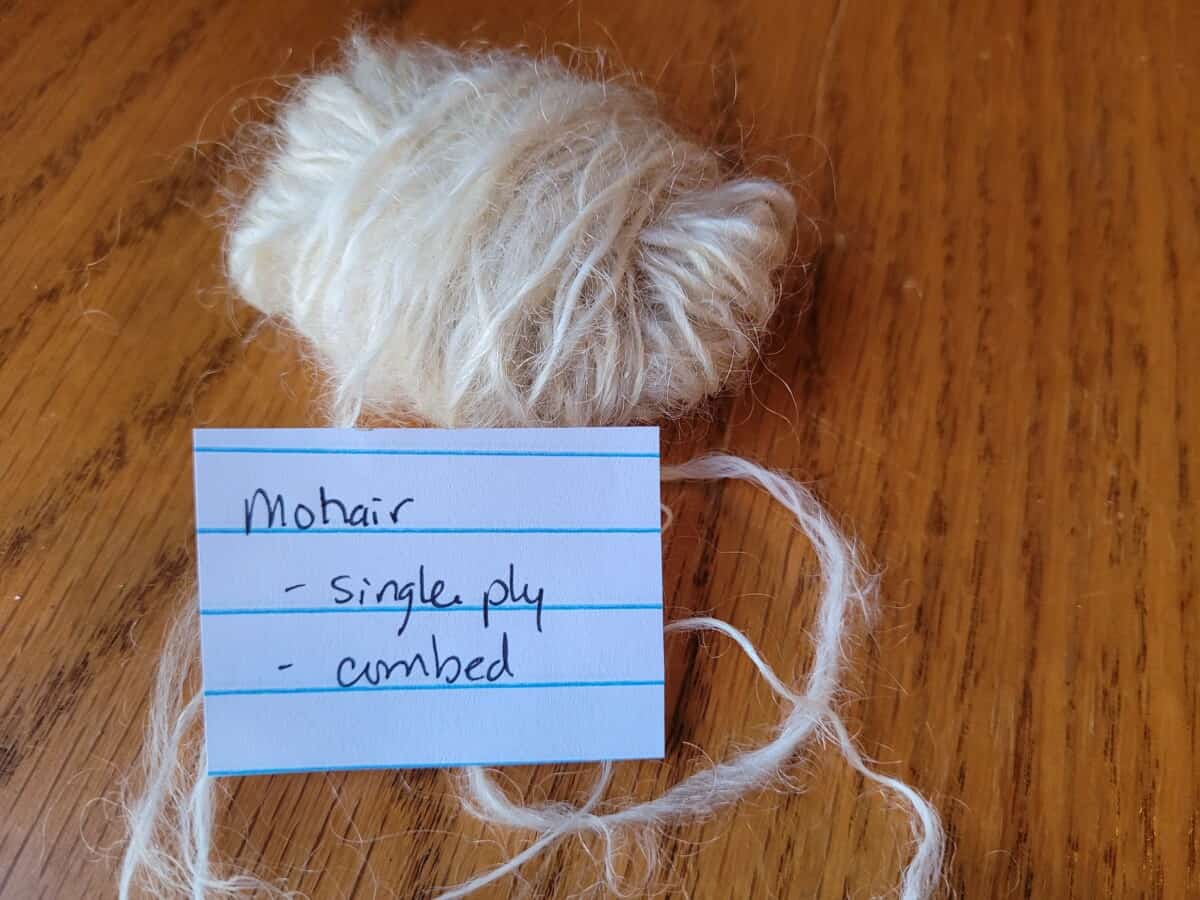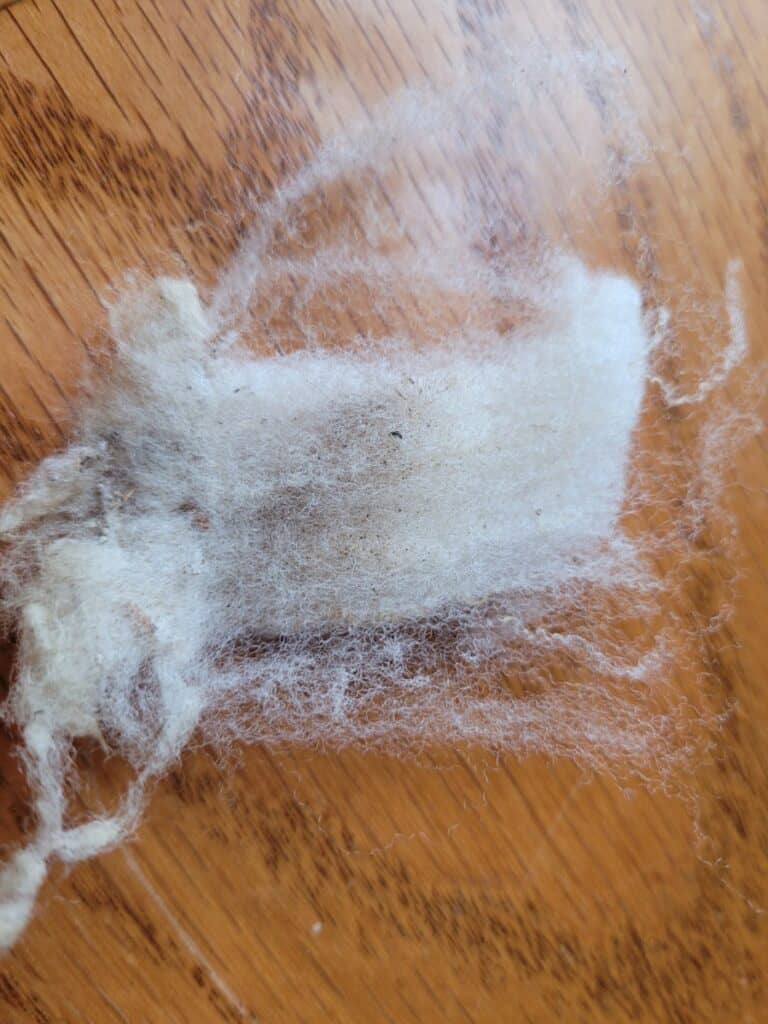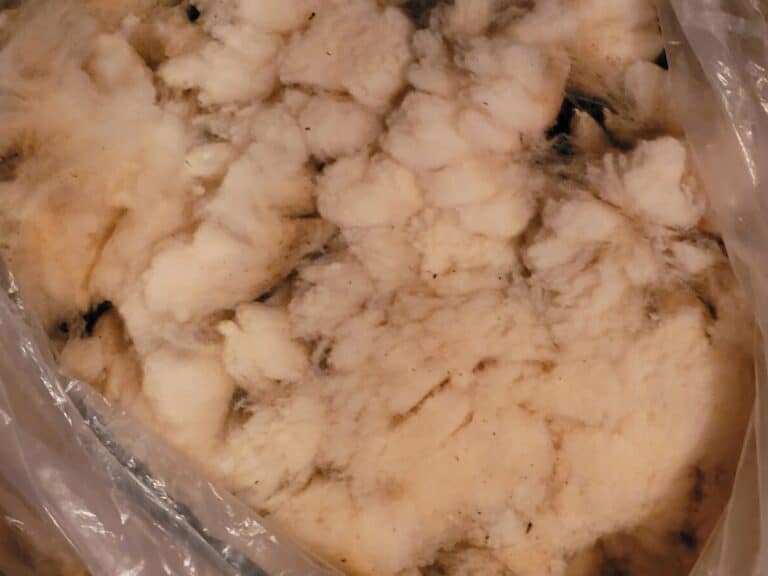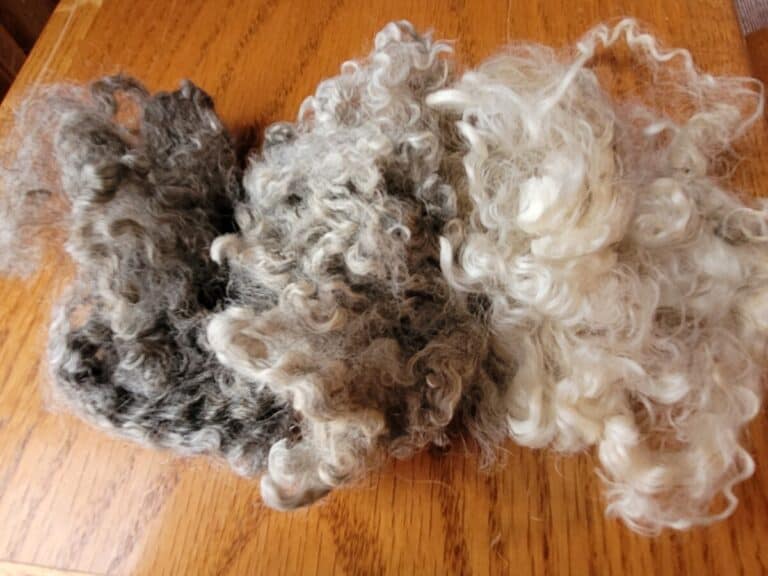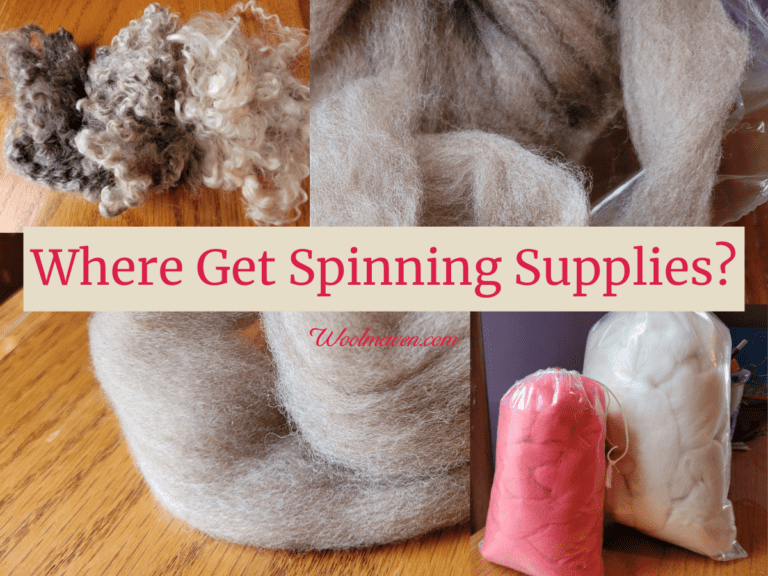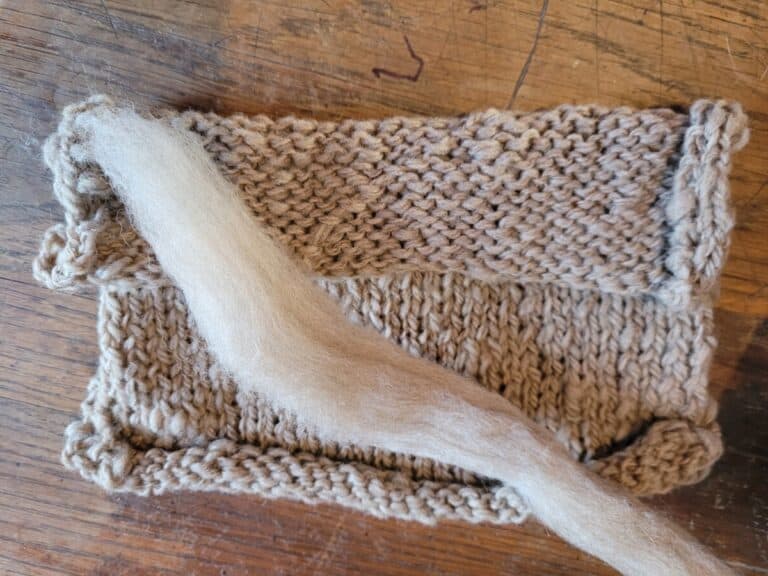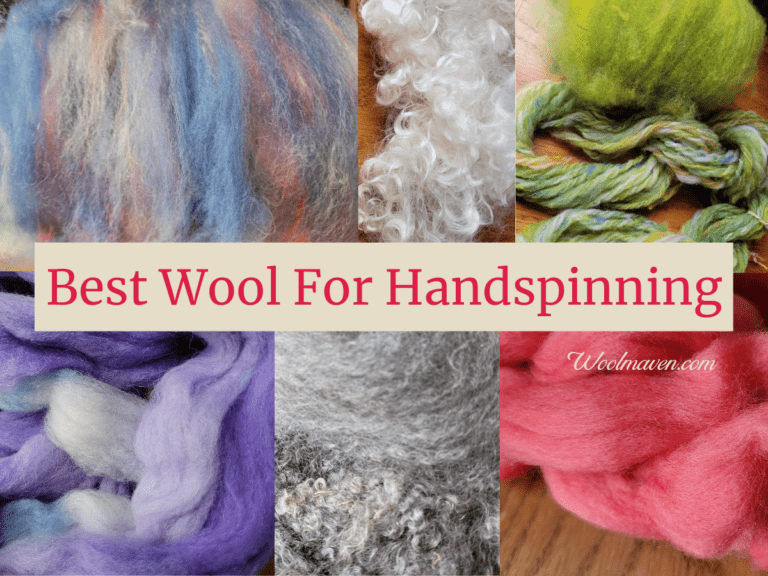6 Wools That Are Hard To Spin
There are all manner of wools to try, this is the best part of handspinning! But, which wools will be easier to work with and which ones will be harder to learn to spin?
The types of wool that are hard for a beginner to handspin are: fine wool, long wool, down wool, angora, mohair and pet hair. These fibers are either short or slippery, both of which are hard for a new spinner to work with but can be worked up to with some practice and experience.
Let me take the mystery out of it for you: the easiest wool to learn to spin is a medium wool.
The hardest wools to learn to spin are listed below, in sections that explain what makes each group more of a challenge for beginner.
Is Spinning Your Own Yarn Worth It? goes over the math of buying vs making wool yarns.
3 types of sheep breeds with hard to spin wool
There are basically three types of wool that are going to be hard for a beginner to work with.
All of these wools have wonderful characteristics that make them great for specific projects and some are perennial favorites of handspinners, like the fine wool breeds, but are tough to spin as a beginner.
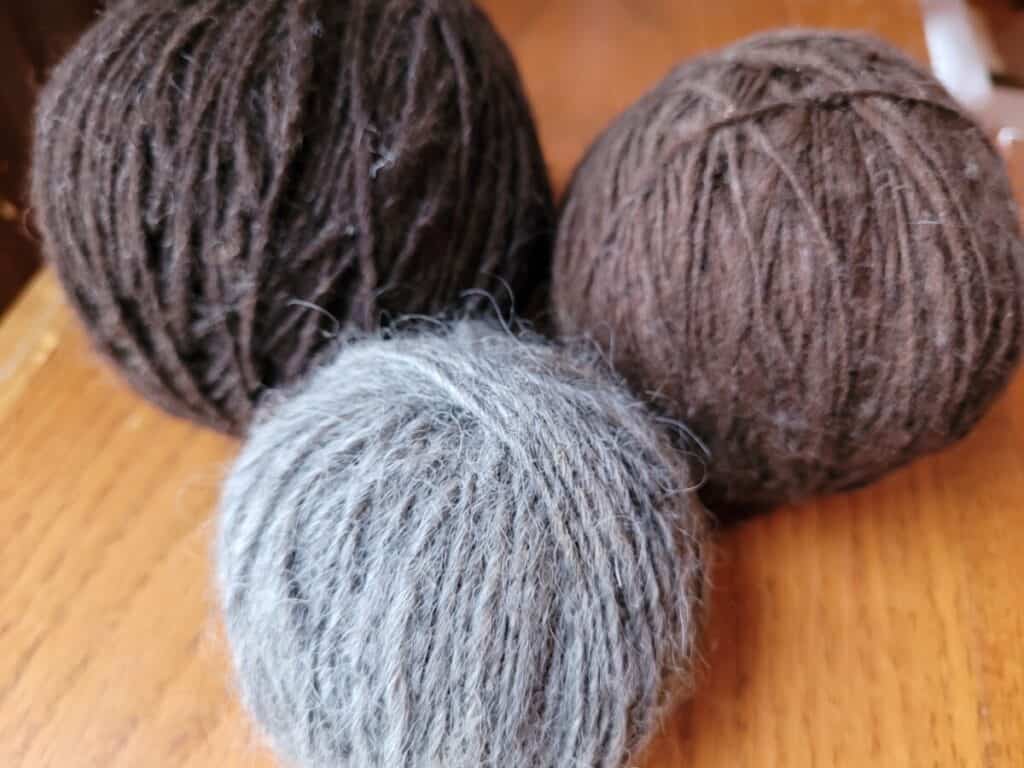
Fine wool breeds are always popular but harder for a beginner
Fine wool breeds generally have a shorter staple length and are harder for a beginner to get started with.
These wools are super popular for handspinners, once you get the groove, until then this group will be a bit much for anyone new.
Examples of fine wool breeds are Merino, Rambioullet and most Targhee.
Is Merino Hard To Spin? gives tips on working with merino, specifically.
Long wool breeds are becoming more available
Long wool breeds have exactly the opposite challenges of fine wool breeds, these wools can have crazy long staple lengths, so it can be hard to manipulate the wool lock as you are spinning.
Long wools are very popular with handspinners, especially with anyone who wants to spin a silky yarn with tons of luster, but these are not the best place for a beginner to start.
Learn on a few medium wools, then branch out to long wools once you have the spinning part figured out.
Examples of long wool breeds are Wensleydale, Scottish Blackface and Teeswater.
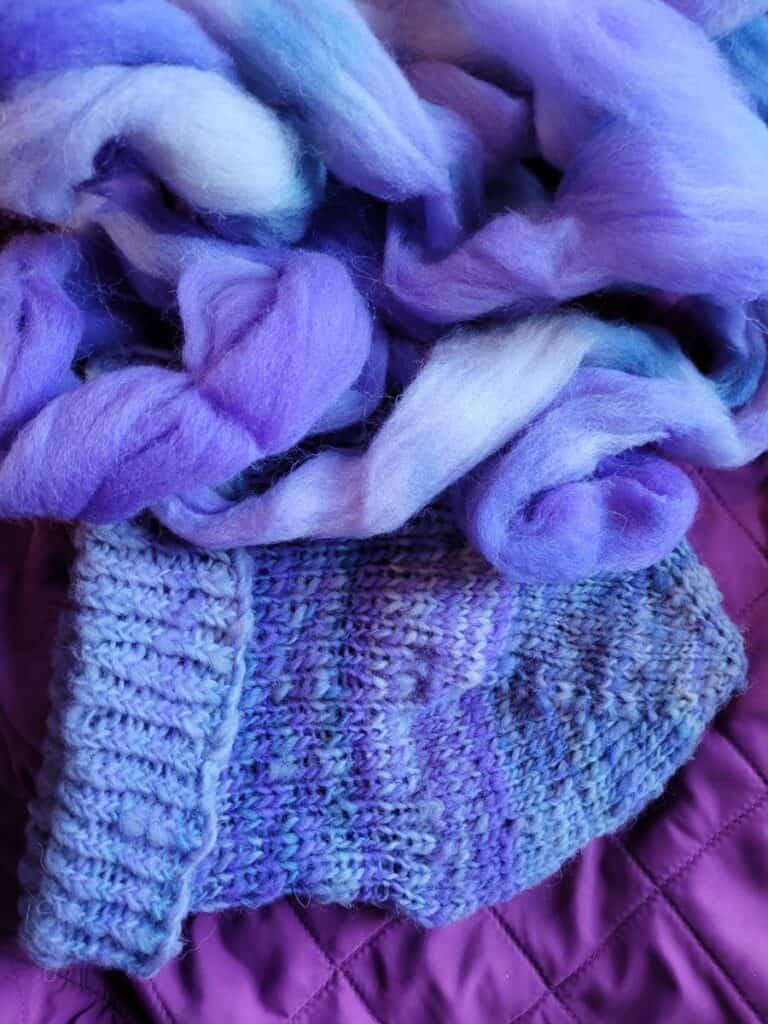
Down wool breeds have the shortest fiber staple
The down wool breeds have the shortest staple length of all the main wool breeds. The good news is that these wools are great for woolen yarn and tend to not felt, making them naturally a washable wool.
But… we are talking about ease of spinning and down wools are not the best place to start to learn to spin.
It’s a challenge to keep ahold of the short fibers as you are spinning, this is one of the things that was hardest for me to learn, I was always going to fast with my feet and loosing the yarn up onto the bobbin.
Examples of down breed sheep are Dorset, Hampshire, Southdown and Suffolk.
The first fleeces I had to work with were Dorset, that was the main sheep that we raised and it was tough to get the twist in the wool before it slipped out of my hands.
To make up for that I would spin really thick yarn that was heavy and basically baler twine. (I’m laughing at my former self as I write that.)
It also didn’t felt, something that disappointed me, but now I see how I could have used it for different projects were non felting would have been an asset.
To be fair, I was new to spinning and was preparing my wool at home, so both were working against me there!
However, I have gone through that tough spot and now am a better or at least more resilient spinner for it.
This is kind of a long story to illustrate the importance of matching your ability with the natural characteristics of the wool, especially as a beginner!
3 other animal fibers that are hard to spin
Of course, you have heard of other animal fibers that can be spun aside from sheep wool. Sadly, they are all in the harder to spin section.
You can work up to them and I would recommend doing so, but these fibers are best tried after a few months of practice with an easy to spin sheep wool.
Angora rabbit is a challenge
Angora rabbit fiber is harder to spin than most wools, mainly because it is slippery since it is a hair and not a crimpy wool.
The crimp of wool helps it hold together, without the crimp, angora is tough to manage.
100% angora fiber is challenging for beginners, however, a better more beginner friendly option is to use a blend with a portion of angora and see if this is more manageable for your spinning skill level.
As you get better, especially with finer wools, you’ll be able to work with 100% angora, it’s just going to require some practice to get there.
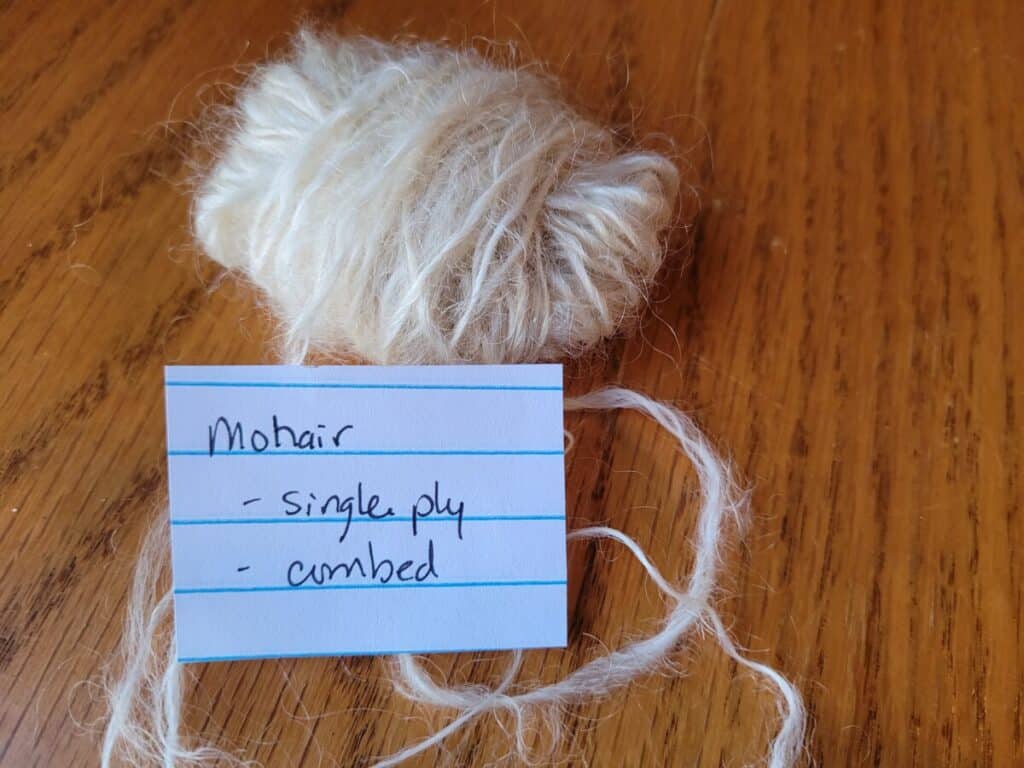
Mohair is slippery
Mohair is from angora goats. This is a long fiber that is slippery, this is why I put mohair in the hard to spin category.
Once you get the feel of it, mohair will be pretty easy to spin, but for beginners it will be frustrating compared to starting out on something easier, like a medium sheep’s wool.
Give yourself some time to get better at spinning then try mohair when you are ready to branch out a bit. Mohair is another great fiber to blend with wool, but tough for the new spinner by itself.
Spinning Mohair is an article on how to work with Mohair from Ronan Country Fibers, if you want to learn more.
Pet hair is best blended
Spinning pet hair has the same challenges as angora, you are really dealing with a hair that is straight and has very little grip to hold it to the other fibers.
If you want to spin pet hair, consider blending it in with a wool that works well for you to spin and see how it works out.
Hard to spin wool has certain characteristics
The hard to spin wools are all going to have at least one of these characteristics:
- short fiber
- excessively dirty
- old
- super fine
- slippery
As you progress in your spinning ability, you’ll be able to try new fibers and see if one of the hard to spin fibers is actually a favorite!
Some of these wools, like Merino, are very popular for a reason, it’s wonderful wool!
Once you are more comfortable with spinning, start to experiment with different fibers and see which ones work for you.
After you learn the basics of spinning, you can now purpose spin for a project.
You can tailor your spinning to more than just spinning, which may require you to switch to a different fiber and also a different way of spinning.
100+ Breeds Of Sheep has an extensive chart on breed specific wools and their characteristics, great for when you want to look into a specific breed’s wool.
Improperly prepared wool of any breed is harder to spin
To be upfront with you, wool of any breed or species that is dirty, full of contaminants, tangled or felted up, etc. will be harder to spin, regardless of the breed or the potential of the fleece if it were properly cared for.
This is a sad thing to have to say, especially if you are really excited about a fleece and it turns out to be a mess, once you get ahold of it.
I had this happen with a Finn fleece. We had a few and were shearing once a year, like the rest of the flock. That’s not enough, apparently, since the fleece felted on the sheep!
Very disappointing, to say the least, since the unfelted parts were nice to spin.
Fiber processing can fix a small amount of challenges, like carding a shorter staple length wool or getting the VM (vegetable matter) out of the fleece, but processing can not overcome severe contamination or staining.
Especially if you are working with your own fleece, keeping the sheep clean and burr free for the year will make your spinning much more enjoyable.
Working around burrs and tons of dirt or poo is annoying, at best.
The Woolery has a nice article on How To Get Started With Spinning which will steer you towards easy to work with wools.

